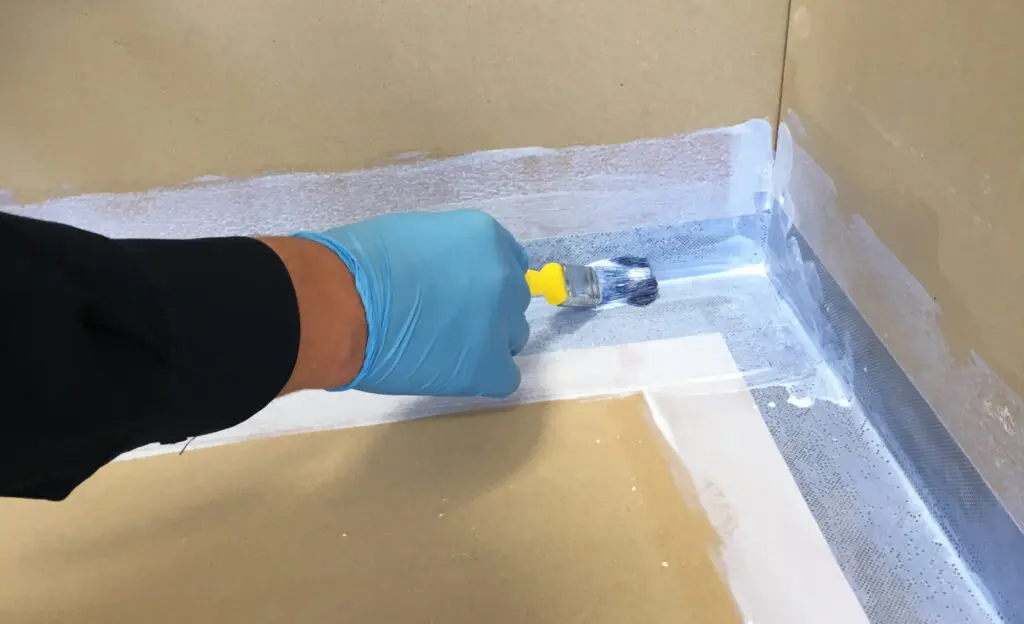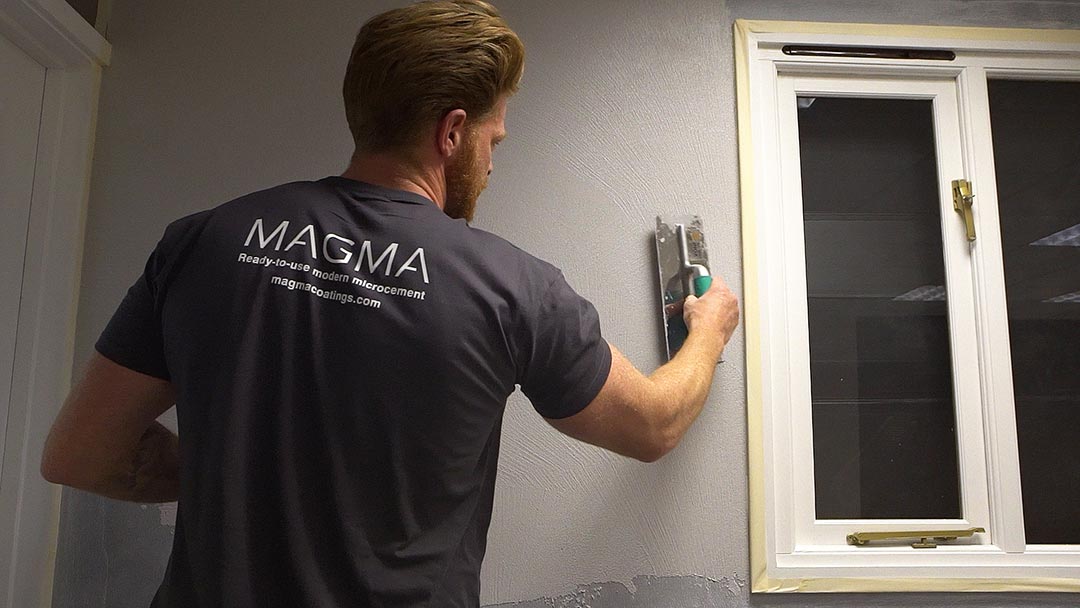In light of the recent changes introduced by the NHBC regarding substrates for tiling in bath and shower enclosures, wet rooms, and bathroom pods, architects, designers, specifiers, and homeowners need to understand the implications of these changes, particularly in relation to the use of microcement and resin systems.
These changes, effective for homes with foundations begun on or after 1st July 2024, significantly affect product choices and installation practices in bathroom and wet room environments, not only in new builds but also in redesigns and modifications of existing areas.
NHBC, having noted a rise in claims related to water damage in these areas, has provided clear guidelines for substrate selection and waterproofing measures.
Gypsum-based plasters and plasterboard, along with calcium sulphate screed, are identified as unsuitable substrates in wet rooms or areas with power showers, regardless of tanking provisions. Additionally, NHBC emphasises the necessity for waterproofing walls and floors in wet rooms and power shower areas to mitigate the risk of water damage.
Professionals and homeowners involved in the specification the installation of microcement and resin systems in these environments should also align with NHBC standards and recommendations.
Here’s how these changes may impact decision-making:
Substrate Selection
NHBC guidance highlights the importance of selecting appropriate substrates to ensure longevity and performance in wet environments. Microcement and resin industry professionals must carefully consider substrate materials compatible with their systems to comply with NHBC standards.
Waterproofing Measures
With NHBC stressing the need for waterproofing in wet rooms and power shower areas, it’s imperative for those utilising microcement and resin systems to integrate effective waterproofing solutions into their installations. This may involve incorporating tanking systems or impervious waterproofing materials behind the microcement or resin to prevent water ingress and structural damage.
Product Suitability
Manufacturers and suppliers of microcement and resin systems should reassess the suitability of their products in light of NHBC guidelines. Ensuring that their systems are capable of providing adequate waterproofing and adhering to recommended substrate requirements is essential.
Please see our article “waterproofing-and-microcement-within-a-bathroom-or-wetroom/” for more information.
Installer Training and Expertise
With the increased focus on waterproofing, professionals involved in the application of microcement and resin systems should undergo appropriate training to ensure proper installation techniques. This includes understanding NHBC standards and effectively implementing waterproofing measures.
Client Education
The decision-makers considering microcement or resin systems for their bathroom or wet room projects should know the importance of waterproofing and substrate selection. They should be informed about NHBC guidelines and encouraged to work with professionals who adhere to these new standards.
In conclusion, the NHBC guidance on substrates for tiling in bathroom and wet room environments necessitates a proactive approach from all decision-makers involved in the specification, installation, and use of microcement and resin systems.
By aligning with NHBC standards, prioritising waterproofing measures, and ensuring product suitability, professionals can deliver high-quality, durable installations that meet regulatory requirements and mitigate the risk of water damage.
References
NHBC Technical Guidance Note: Substrates for tiling bath and shower enclosures, wet rooms and bathroom pods (December 2023).
NHBC Standards 2023 Clause 9.2.5 ‘Ceramic wall tiling’.
BS5385 Parts 1-4 ‘Wall and floor tiling’.
Industry-related guidance, such as the NHBC Technical Guidance Note and NHBC Standards 2023 Clause 9.2.5, provides essential information for professionals and homeowners alike.
Referencing the above standards, like BS 5385 Parts 1-4 for “Wall and Floor Tiling”, ensures compliance with recognised best practices in the construction industry, which should be followed for these systems.
Contact us today for more information on how NHBC guidance impacts microcement and resin systems in bathrooms and wet environments.
Further Reading
Please also read our article, which provides a greater depth into the steps required to successfully specify a resin or microcement system for a wet environment: https://www.resinflooringcompany.com/waterproofing-and-microcement-within-a-bathroom-or-wetroom/






